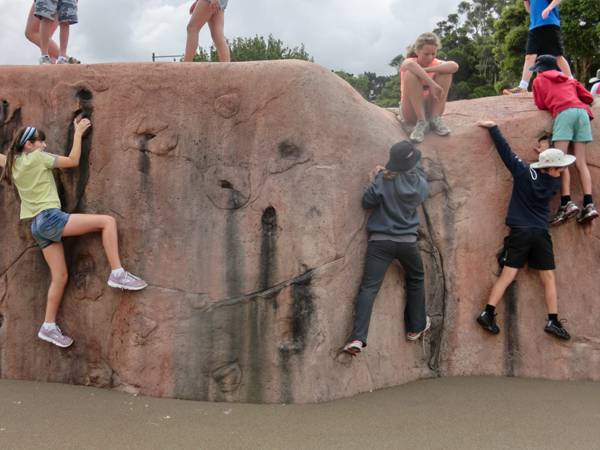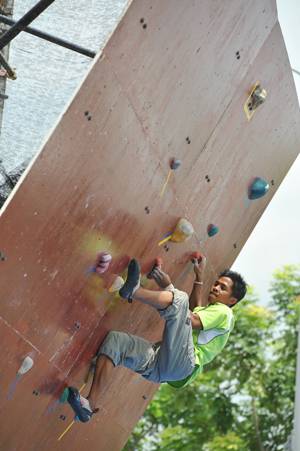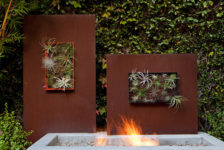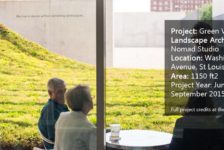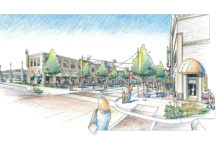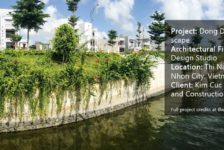Here is the final part of the three part series on How to Design a Landscape for Extreme Workouts. This time, we are going to explore the exciting world of bouldering. We have gathered a number of examples from around the world to demonstrate that designing for bouldering can have many aesthetic and physical benefits for our landscapes. Whether you are interested in the sport or not, you are going to want to see what we have lined up for you! What is bouldering? Bouldering is a form of climbing that is done without the use of harnesses. Climbing is an art that starts from an early stage for many human beings — children love to climb anything, from trees to rocks to walls! However, as we get older, our participation in what was once a natural desire is often superseded by the needs and habits of our society. Bouldering gets us reacquainted with this natural process. It is one of the few activities that truly cross all barriers and is wholeheartedly engaging for those who partake.
Bouldering design and consultation firm Bouldergeist explain that the sport is actually focused on movement, not height, and when meeting local safety standards, it can exist in many forms. Indeed, it is stressed that the structure itself should be strong enough to support dead load (the weight of the structure) as well as live loads (the climbers) and the momentary forces that are caused by the climbers that can be several times the weight of the climbers. But once all those barriers are crossed, you can begin thinking about the basics and the extraordinary design decisions. The location of the structure There are several bouldering facilities situated inside. But of course nothing is more exciting than climbing something outside. A good location is important to make sure the bouldering structures will be well used. These bouldering rocks in Malmo, Sweden, are located in a skate park that was requested by the youths in the area. If you look at the project by Radwall (picture above), the climbing structure was built for fifth- and sixth-graders as a social space and introduction to climbing. What a great way to get children to play and explore from an early age. A multi-functional sculptural interaction When you look at these structures, their presence is very powerful, as they are unique in form. Hence they can be seen as sculptural pieces within the landscape, taking on a multi-functional role. This bouldering wall in Meerpark in Amsterdam, for example, is designed not only for climbing, but also as a retaining wall for an adventure-playing hill on the other side, becoming an architectural-like façade. The sculpture-like qualities can also be combined with other functions of interaction, such as this 19-meter tall climbing tower that allows users to zip wire from the balcony or to look out from the observation decks. Below: Meerpark in Amsterdam Many shapes and forms, many ways to construct! Make sure you don’t limit yourself to a standard form. While a huge rock quarried from Cornwall and brought to London might be magnificent it does not always translate to a unique design. This climbing wall in Marymoor Park, Washington, shows how rock-like formations are being translated into a more abstract and creative form that starts to experiment. There is also a lot to play with the methods of construction — you can choose to add details where you wish. This structure in Bozeman, Montana, started as a wire frame before the frame was sprayed with shotcrete. Exterior decoration Following the previous point, since these structures are all about the exterior, you can really make an effort to liven up or bring twists to a standard bouldering structure. Especially in larger cities, bringing a more modern element to it can make the structure fit better with its surroundings or can tell a story about a local character. For example, this incredible climbing wall in Copenhagen’s Banana Park is 14 meters high and makes its mark as a structural gateway into the site, with decorations to suit the quirky quality of the park. Another example from Merida, Spain, uses modern geometric designs that were inspired by the construction methods used to create Chinese dragons. And in Beijing, the Ritan Park Climbing Wall has a distinct pattern that is almost naturalistic, yet its manmade exteriors are so textural. Below: Bjørn Arnel Iisager Climbing 8a at Bananna Park Copenhagen Thinking out of the box You have seen many examples that show how these bouldering pieces can take form. However, you may want to take the idea of bouldering and think outside the box by considering how different you could approach the design to get users unfamiliar with the sport to want to participate. The climbing wall in Tokyo, although it may be inside, is a great example of a designer thinking creatively to to encourage people to make that interaction. Situated at a fitness club, interior design elements are used to inspire people to try out the sport. Below: The Excalibur, worlds tallest climbing wall Warning: Adult language used These examples just show that there should be more sculptural pieces that explore the sport of bouldering. If you ever get the opportunity, hopefully our guidelines have given you enough inspiration and a starting guideline. What is great about designing for bouldering is that there are many aspects to play around with. This wraps up our explorative article series. Hope all of them have given you creative ideas. Keep on pushing landscape architecture to the next level. See the other articles in our series: How to Design a Landscape for Extreme Workouts : Part 1 Calisthenics How to Design a Landscape for Extreme Workouts: Part 2 Free Running Article written by Win Phyo Featured image: shutterstock.com Published in BlogLogin
Lost Password
Register
If this is your first time on the new site, please click "Forgot your password?". Follow the steps to reset your password. It may be the same as your old one.



